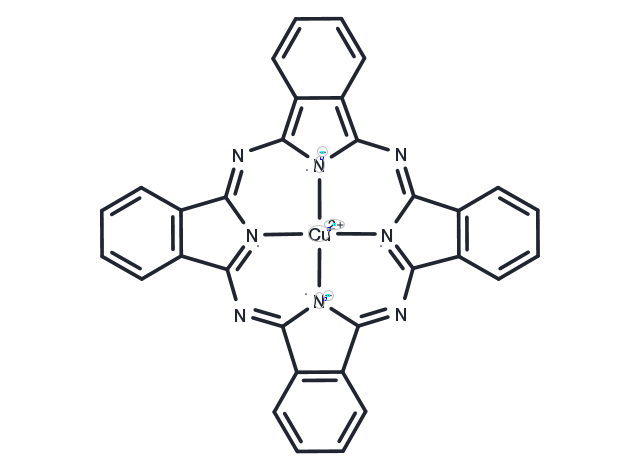keep away from direct sunlight
Powder: -20°C for 3 years | In solvent: -80°C for 1 year

Pigment Blue 15, also called by many names (EINECS 205-685-1), is a bright, crystalline, synthetic blue pigment from the group of phthalocyanine dyes. Its brilliant blue is frequently used in paints and dyes. It is highly valued for its superior properties such as light fastness, tinting strength, covering power and resistance to the effects of alkalis and acids. It has the appearance of a blue powder, insoluble in water and most solvents.

| Pack Size | Availability | Price/USD | Quantity |
|---|---|---|---|
| 100 mg | Inquiry | Inquiry | |
| 500 mg | Inquiry | Inquiry |
| Description | Pigment Blue 15, also called by many names (EINECS 205-685-1), is a bright, crystalline, synthetic blue pigment from the group of phthalocyanine dyes. Its brilliant blue is frequently used in paints and dyes. It is highly valued for its superior properties such as light fastness, tinting strength, covering power and resistance to the effects of alkalis and acids. It has the appearance of a blue powder, insoluble in water and most solvents. |
| Synonyms | AI3-26192, EINECS 205-685-1, Blue GLA, Blue pigment, Phthalocyanine Blue BN |
| Molecular Weight | 576.07 |
| Formula | C32H16CuN8 |
| CAS No. | 147-14-8 |
keep away from direct sunlight
Powder: -20°C for 3 years | In solvent: -80°C for 1 year
You can also refer to dose conversion for different animals. More
bottom
Please see Inhibitor Handling Instructions for more frequently ask questions. Topics include: how to prepare stock solutions, how to store products, and cautions on cell-based assays & animal experiments, etc.
Pigment Blue 15 147-14-8 AI3-26192 EINECS 205-685-1 Blue GLA Blue pigment Phthalocyanine Blue BN inhibitor inhibit
